BY DIANE VASZILY | MARCH 16, 2011
Desert plants kept Native Americans healthy
How did the indigenous people stock their medicine chest?
 Living in the harshness of the southwest desert regions called for a mastery of resources. Ever wonder how the indigenous people got along, what they used for calories, cures and household paraphernalia?
Living in the harshness of the southwest desert regions called for a mastery of resources. Ever wonder how the indigenous people got along, what they used for calories, cures and household paraphernalia?
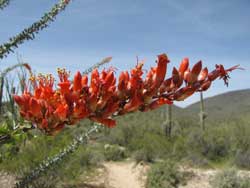 Each season provided a new assortment of plants from which to choose. Although winter could not be considered the best season for collecting a large assortment of medicinal herbs for the “medicine chest,” there were a few ripe for the picking even then!
Each season provided a new assortment of plants from which to choose. Although winter could not be considered the best season for collecting a large assortment of medicinal herbs for the “medicine chest,” there were a few ripe for the picking even then!
The Apaches collected the roots of the ocotillo, that tall, spiny-skinned, 15-foothigh plant that radiates stems like whips around a central base. After removing the bark (thorns and all), they used it to make a tea for drinking and a bath for soaking tired and swollen limbs.
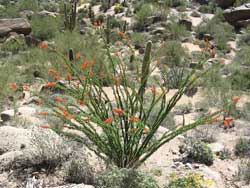 The Cahuilla Indians of California used the root tea prepared in the same way for treating loose coughs in older members of the tribe. The ocotillo plant receives protected status in Arizona, forcing modern-day Apaches to do their collecting on reservation land.
The Cahuilla Indians of California used the root tea prepared in the same way for treating loose coughs in older members of the tribe. The ocotillo plant receives protected status in Arizona, forcing modern-day Apaches to do their collecting on reservation land.
To eliminate “bad vibes,” which could be interpreted to include “germs” and anything else that brought bad feelings, the Navajo and Pueblo people would collect the ripe, purple berries from the juniper tree.
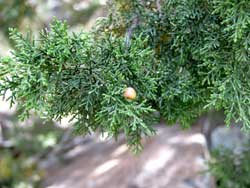 These were then added to the hot rocks in saunas or sweat lodges, filling the air with a pleasantly aromatic disinfectant. The same was achieved within the living quarters with burning bundles of juniper leaves, much like incense.
These were then added to the hot rocks in saunas or sweat lodges, filling the air with a pleasantly aromatic disinfectant. The same was achieved within the living quarters with burning bundles of juniper leaves, much like incense.
To further deter bad influences, many Native Americans carried pieces of the leaves in their clothing or around their necks in small “medicine bags.” Before meals, it was not unusual to see juniper berries being served as an appetizer. It seemed that chewing on a few before meals stimulated stomach acids.
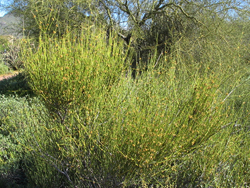 Allergies drove people of the upper elevations to seek one particular herbal aid, Mormon tea, even in the snow of winter. The same plant can be found in the lower desert as well. Its use was so widespread that it goes by several other names, Joint Fir and Desert Tea being the most common.
Allergies drove people of the upper elevations to seek one particular herbal aid, Mormon tea, even in the snow of winter. The same plant can be found in the lower desert as well. Its use was so widespread that it goes by several other names, Joint Fir and Desert Tea being the most common.
After gathering large bunches of the jointed stems, they would break them at the joints and infuse in hot water to drink as a daily beverage for relieving congestion. Stronger preparations were used as a diuretic by many indigenous people of both North and South America.
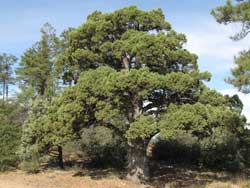 Watch the desert in the coming months as the “inventory” of the desert pharmacy begins to grow. Can you pick out the ones which will go into the upcoming “medicine chest” of the indigenous people? Let your nose conduct the test!
Watch the desert in the coming months as the “inventory” of the desert pharmacy begins to grow. Can you pick out the ones which will go into the upcoming “medicine chest” of the indigenous people? Let your nose conduct the test!
Photos – From top to bottom: Ocotillo flower, Ocotillo plant; One-Seed Juniper fruit; Mormon tea; Alligator Juniper tree
Photos by Dave Mills
©2010 Desert Awareness Committee



